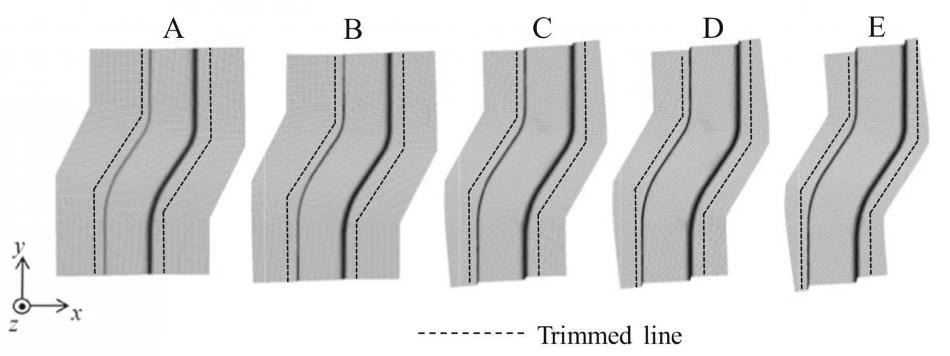May 13 2019
A Japan-based team of scientists headed by Kanazawa University used the most modern simulation methods to determine how to fabricate the best tools to stamp complicated shapes into metal sheets without causing the resulting parts to twist out of shape.
 Forming process using optimal blank shape. Credit: Kanazawa University
Forming process using optimal blank shape. Credit: Kanazawa University
Their technique assures higher quality stamped metal parts for use by the car industry.
A simulation technique developed by Kanazawa University-based scientists provides a virtual upgrade to the process of stamping metal sheets to make parts used in automotive products like car doors.
Their simulation can be employed to optimize a metal stamping press in its conceptual design phase, thereby minimizing the costs of physically trying designs. This technique is cost-effective as well as more comprehensive when compared to previous simulation techniques.
In order to enhance fuel consumption, automotive manufacturers have increasingly been seeking to manufacture cars using lighter materials instead of conventional steel. High-strength steel is regarded as a lightweight alternative; however, when sheets of high-strength steel are stamped into shape to make car parts, they tend to tear, bend, wrinkle, or become too thin in some areas when compared to parts manufactured with conventional steel.
In a competitive automotive market, it is more vital than ever to perform simulations ahead to optimize tools prior to fabricating and testing them. Or else, the tools may have to be modified over a lengthy and costly period of trial-and-error until they can successfully manufacture high-quality parts.
Several components of the tool have an impact on the final product and could hence be optimized through simulations; however, current simulations are not wide-ranging and hardly ever consider the shape of the stamping stencil (termed the “blank shape”) that the metal sheet is punched through to produce the preferred shape. Furthermore, much research in this field concentrates on stamping simple bar- or U-shapes.
We simulated the stamping of S-shapes into sheet metal. Unlike U-shapes, the stamping of S-shapes can cause the metal parts to twist out of shape, allowing us to study ways of reducing twisting springback.
Ryoto Ishizuki, Study Co-Author, Kanazawa University
The scientists developed a new way to decrease the twisting of metal sheets by optimizing the shape of the blank shape while at the same time decreasing tearing and wrinkling of the metal sheet. They also simulated the amount of force to be used to fix the metal sheet in place in the so-called “blank holder” and how it should be adjusted during the punching process to obtain the best outcomes.
Sequential approximate optimization using a radial basis function network allowed us to efficiently optimize the blank shape and variable blank holder force trajectory.
Satoshi Kitayama, Study First Author, Kanazawa University
A main concern within the car manufacturing industry is decreasing the tendency of high-strength steel parts to twist and bend out of shape after being subjected to stamping. The outcomes of this research are thus expected to considerably increase the quality of stamped metal parts.